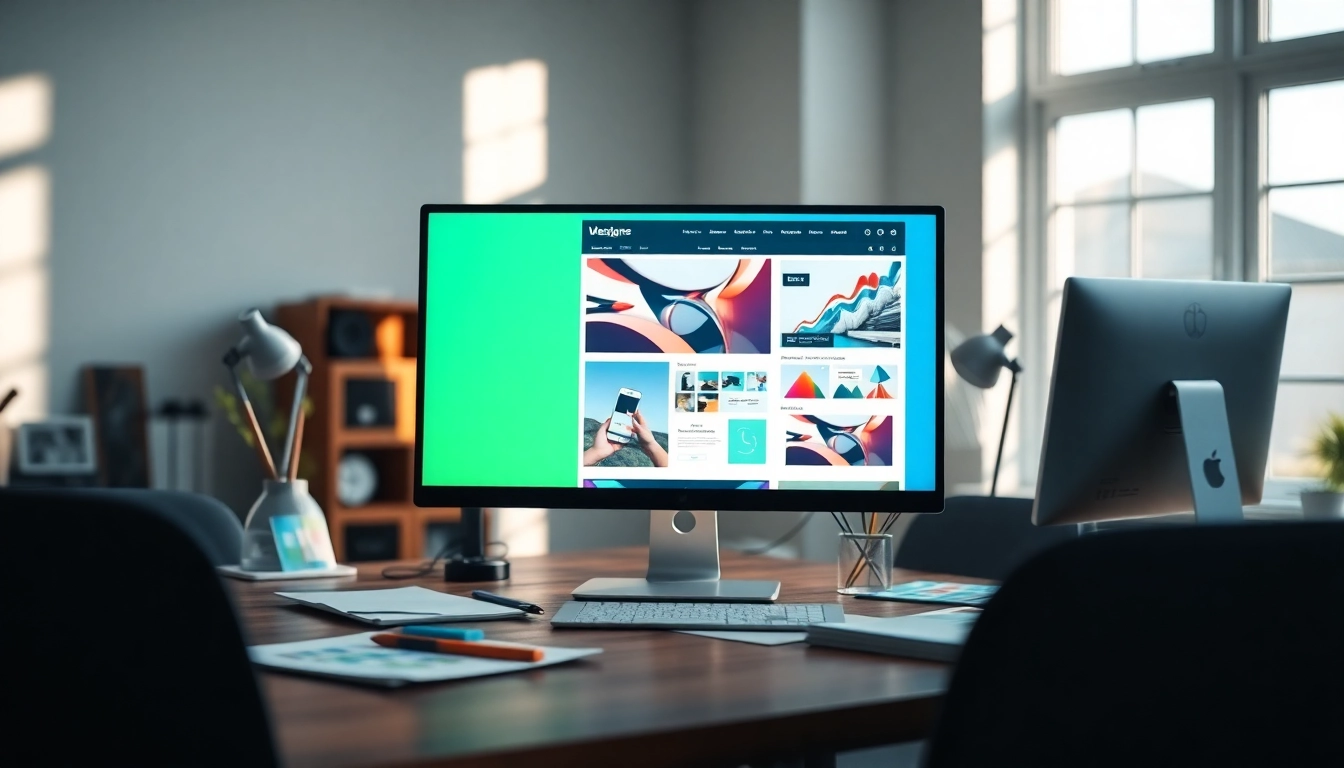Understanding the Fundamentals of Website Design
In today’s digital landscape, having a well-designed website is paramount for any business looking to establish a robust online presence. Website design is not merely about aesthetics; it encompasses a range of functions and aspects that ensure the site is user-friendly, engaging, and aligned with the business’s goals. This article will explore the fundamentals of website design, including its importance, key elements, common mistakes, and much more.
Why Website Design Matters for Your Online Presence
The visual impact of a website can significantly influence user perceptions and behavior. Studies reveal that users form first impressions within seconds of landing on a webpage, meaning that effective design can lead to better user engagement and conversion rates. A well-structured website can foster trust and credibility, thereby enhancing the user’s likelihood of purchasing a product or service.
Key Elements of Effective Website Design
A successful website integrates several key elements that collectively enhance the user experience:
- Usability: The website must be easy to use, with simple navigation that guides users seamlessly through the content.
- Responsive Design: With a growing number of users accessing websites via mobile devices, a responsive design ensures that the site adapts well to different screen sizes.
- Visual Hierarchy: The strategic arrangement of elements on the website helps prioritize information, guiding users toward critical actions.
- Content: Quality content tailored to meet user needs is essential for engagement and SEO.
- Aesthetics: The visual appeal, including colors, typography, and images, should align with the brand identity and resonate with target audiences.
Common Website Design Mistakes to Avoid
While striving for a robust website design, several pitfalls can undermine the project’s success. Common mistakes include:
- Overcomplicating Navigation: Cluttered menus and confusing navigation can frustrate users and lead to high bounce rates. Simplicity is key.
- Neglecting Mobile Optimization: Failing to create a mobile-friendly version can alienate a significant portion of the audience.
- Using Low-Quality Images: Images that are pixelated or irrelevant can detract from credibility.
- Ignoring SEO Practices: A beautiful website that doesn’t rank well in search engines limits its visibility.
- Not Testing for User Experience: Skipping usability testing can result in missed opportunities for improvement and optimization.
Designing for User Experience in Website Design
The Importance of Usability in Website Design
Usability is a vital component in the realm of website design. It refers to how effectively users can achieve their goals on a website. An intuitive layout minimizes user effort, resulting in increased satisfaction and retention. To enhance usability, design elements should be predictable, consistent, and coherent.
Creating Intuitive Navigation
Navigation facilitates access to information across a website. An effective navigation system organizes content logically, making it easy for users to find what they are looking for. It should include a clear menu structure, breadcrumb navigation, and a search bar for quick access to information.
Best Practices for Responsive Website Design
Responsive design is essential in an era where users access websites through various devices. Implementing best practices includes:
- Using flexible grid layouts that adjust to the screen size.
- Optimizing images for faster loading times.
- Testing on multiple devices and platforms to ensure consistent performance.
Incorporating Aesthetics in Website Design
Choosing the Right Color Palette for Your Brand
The color palette of a website should reflect the brand’s personality and values. Colors evoke emotions and can influence user behavior. Understanding color psychology will aid in creating a strong visual identity:
- Red: Often associated with energy and urgency.
- Blue: Conveys trust and professionalism.
- Green: Represents growth and tranquility.
- Yellow: Evokes optimism and cheerfulness.
Typography and Layout Best Practices
Typography serves not just to convey content but to guide readers through the site visually. Best practices include:
- Choosing legible fonts with appropriate sizes and spacing.
- Maintaining consistency by limiting the number of font styles.
- Aligning text and visuals to create a harmonious layout.
Visual Elements that Enhance Website Design
Integrating images, videos, and infographics can enhance user engagement. However, it is essential to ensure that visual elements are purposeful and enrich the content rather than overwhelm it. Strategic use of whitespace can also improve the overall aesthetic and comprehension of the site.
Website Design Trends to Watch
Emerging Technologies Affecting Website Design
Technology continues to shape website design trends. Innovations such as artificial intelligence, augmented reality, and chatbots offer new dimensions to user experience:
- AI-Powered Design: Enhancing personalization for users.
- VR Showrooms: Providing immersive browsing experiences.
- Chatbots: Offering instant support while collecting valuable user data.
Sustainable Practices in Website Design
Incorporating sustainable practices into website design can not only enhance a brand’s image but also appeal to environmentally conscious consumers. Techniques include:
- Optimizing website performance for lower energy consumption.
- Using eco-friendly hosting services.
- Designing for minimalism to reduce digital waste.
Integrating Multimedia in Your Website Design
Multimedia can significantly enrich user experiences. Videos can explain concepts better than text, while interactive elements can keep users engaged longer. However, careful consideration of load times and user preferences is paramount to avoid overwhelming visitors.
Measuring Success in Your Website Design
Key Metrics for Assessing Website Design Performance
Evaluating the effectiveness of website design involves analyzing various metrics, including:
- Conversion Rate: Measures the percentage of users completing desired actions, such as signing up or making a purchase.
- Bounce Rate: Indicates the percentage of visitors who leave after viewing only one page, thereby assessing content relevance and engagement.
- Page Load Time: Affects user experience; slower load times can lead to higher abandonment rates.
A/B Testing for Optimal User Engagement
A/B testing involves comparing two versions of a webpage to see which one performs better. By tweaking one element at a time—such as call-to-action buttons, layout, or color schemes—designers can gather valuable insights into user preferences and behaviors that can drive future design decisions.
Adjusting Your Website Design Based on User Feedback
User feedback is a vital source of information for continuous improvement. Implementing surveys, usability testing, and feedback forms can provide insights into user experience and design effectiveness. Make it easy for users to share their opinions and employ these insights to refine your site continually.



